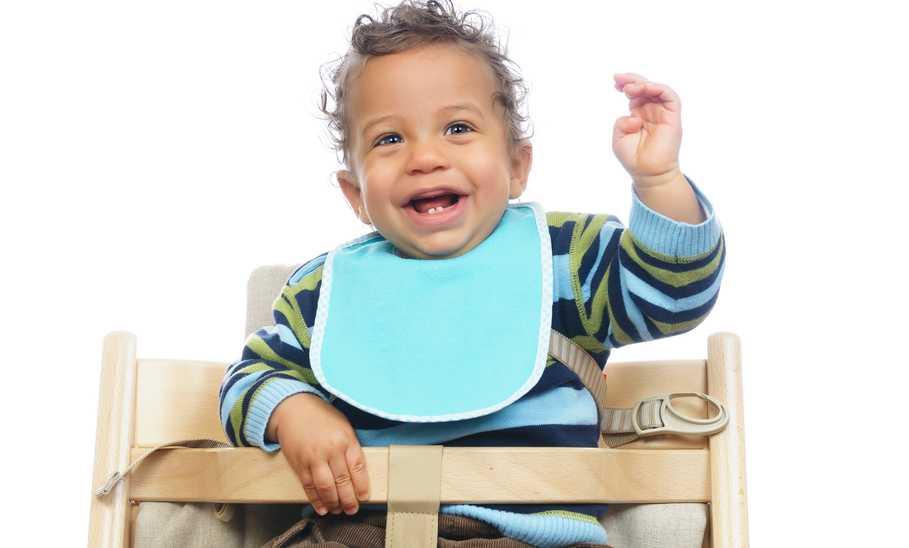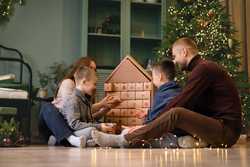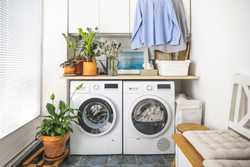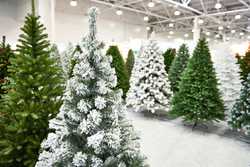The 8 Best Baby Bibs For Food, Drool and Everything Else

Our evaluations and opinions are not influenced by our advertising relationships, but we may earn a commission from our partners’ links. This content is created by TIME Stamped, under TIME’s direction and produced in accordance with TIME’s editorial guidelines and overseen by TIME’s editorial staff. Learn more about it.
Introducing solids to their baby is an exciting, scary, exhausting and—ahem—chaotic experience for many parents. Infants first learn through textures, graduate to the infamous picky-eating stage, and eventually develop their preferred tastes for foods, flavors and dishes. But in those first few years, many experts say the messier you allow your kiddos to be, the better.
This makes baby bibs a shopping item you’ll spend more time researching than you ever imagined. There are so many material options,from soft fabric to silicone. There are so many designs and shapes—from bandanas to pockets—to consider, too. And though many parents associate bibs with solid food, they can also come in handy with infant spit-up and drooling episodes when your tot is teething.
We’ve done the research for you to narrow down the top eight best baby bibs to meet your family’s needs.
![[object Object] [object Object]](https://kytebaby.com/cdn/shop/products/kyte-baby-bib-sage-bib-in-sage-31852706988143_1000x.jpg?v=1672626309)
Though you might know Kyte Baby for their sleep sacks and pajamas, they also have another baby essential on their roster, likewise made of their signature, high-quality bamboo. This buttery-soft fabric is lightweight and breathable and comes in an impressive collection of colors, patterns and designs (you know, so you can match the bib to your baby's outfit of the day!)
Because these are soft yet absorbent, we recommend them as a perfect fit for your newborn to help soak up spit-up. That’s because some brand-new babies have sensitive skin around their mouths, so they could easily become irritated with a harsher material. Bamboo steps in to save the day, and it can serve as a double-whammy for catching spit-up and wiping away drool or formula. And once your baby is ready to start exploring solid foods, they can keep wearing this bib since it works for tots up to 36 months.
Be mindful that reviewers share the bamboo fabric pills with washing, and the colors and patterns fade over time. And hey, since it’s meant to be used for food, it’s normal if this bib carries a leftover stain from spaghetti night.
![[object Object] [object Object]](https://www.abiie.com/cdn/shop/products/BabyBlue_4472x4472px_0013_850x.jpg?v=1678860798)
In those first few weeks (and months), you may be shocked by just how much laundry one tiny little human can produce. Fabric bibs are essential for soaking up spit up and drool, but when your infant starts to transform into a pre-toddler and is munching on juicy watermelon slices and spoonfuls of yogurt, you may quickly fall in love with silicone bibs.
We’re big fans of Abiie Ruby Wrapp Bibs for a few reasons, but first, repeat after us: Dishwasher-safe! Once your kiddo has finished their meal, you can rinse and add this silicone bib to the dishwasher to run overnight. Getting your babe to come around to broccoli may be tricky, but cleaning this durable, ergonomic bib is not.
We appreciate the adjustable neckband with a snap-in button that grows with your kid, providing a snug fit for every age. Also, since many parents like to pack a bib in the diaper bag for restaurant meals, this bib’s four-step foldable design makes it easy to store your baby’s utensils inside. The silicone itself feels high-quality without being too heavy for your baby's neck, and it’s made of food-grade material that meets the FDA and CPSIA standards.
Remember that the added pocket is excellent for catching most food, but heavier items could tumble out.
![[object Object] [object Object]](https://louloulollipop.com/cdn/shop/files/LSBIBSAF_1100x.jpg?v=1683748779)
Here’s the dilemma: You want to allow your baby to explore their food, making whatever mess they want. But, you worry about their clothes getting stained. Or having to scrub caked-on goop off of them during bathtime. Or going up to battle with them as you attempt to wipe down their body.
If you dream of a bib that’s more like a shirt, we’ve found the one! Though it’s on the pricier end of the bibs on our list, this pick from Loulou Lollipop is your best bet for a full-coverage bib that really keeps your tot clean.
We love the 100% eco-friendly recycled polyester, since it’s both waterproof and odor and stain resistant. The adjustable neckline can be fitted for a babe as young as six months, up to three years old. The roomy feel makes it comfortable for babies and protects their clothing and skin. To clean, you simply toss it in the washing machine and allow it to tumble dry on low heat in the dryer.
The only caveat to this well-reviewed full-coverage bib is the texture. Though many bibs feel soft — whether made of silicone or fabric — this one will run a little scratchier, since it’s waterproof and meant to withstand whatever your baby drops. And psst: It doesn’t have a pocket, so make sure the fabric is pulled over their lap, too.
![[object Object] [object Object]](https://www.copperpearl.com/cdn/shop/files/TideBibs1_1080x.jpg?v=1685966228)
The first three months of parenting—also known as the ‘fourth’ trimester—is often a fuzzy time, when you’re surviving on little sleep, much caffeine, and lots of newborn snuggles. As your baby graduates past this period, they often come alive, offering you those first irresistible grins—and lots of drooling. For some babies, spit-up becomes more common, too. This means your little human might wear a baby bib for most of their waking hours to prevent you from changing their clothes several times a day.
If you’re a fan of the bandana style, you’ll love the dozens (and dozens!) of style options from Copper Pearl. These bandanas feature absorbent cotton on the front and a soft fleece-polyester blend on the back, and are age-appropriate from 0 to 36 months. To help keep the bandana secure, you snap together two nickel-free snaps in the back.
We love the soft fabric that truly soaks up whatever baby spits out — literally — but also how easy these are to wash. Toss these into the cold wash and let them air dry with your baby's jammies and onesies (technically you could throw them in the dryer, but reviewers say they tend to shrink). Be warned, there’s no pocket on these, and they don’t offer a large section of coverage on the chest, so they aren’t ideal for eating solids.
![[object Object] [object Object]](https://theollieworld.com/cdn/shop/products/EvieLynnxTheOllieWorldBibs_Solids-Stone01_1600x.jpg?v=1681499737)
Ask any parent who has attempted to swaddle a squirmy baby, and they likely have eventually found the Ollie swaddle, made of stretchy, soft material with a strong velcro closure. You may be surprised to know they also make bandana bibs from that same trustworthy fabric. Its the absorbency capacity that sets this bib apart from others on our list: No matter how much spit-up your young infant spews or how messy your toddler is when drinking water or juice, this moisture-wicking bib easily catches it.
It’s also available in a variety of colors (that reviewers say don’t fade when you toss it in the wash) so you can match it to your kiddo’s style. The soft fabric maintains its texture over time and has a snap closure on the back. Though it’s suitable for babies of all ages, some reviewers say it is too short once their child reaches toddlerhood to provide adequate coverage. It’s also more expensive than others, but it's a smart investment if you only need a few.
![[object Object] [object Object]](https://morepeas.com/cdn/shop/products/roll_and_snap_bib_morepeas_melon_900x.png?v=1696358678)
As your baby learns to chew and swallow, they will naturally enjoy some foods and reject others. Sometimes it’s because of flavor or texture, sometimes it’s just how they feel that particular day. Feeding a tot is called a journey for a reason—it’s a process to get there, often with much mess for parents to clean up. If you’re seeking a simple silicone bib that isn’t fussy, Morepeas fits the bill. In addition to a high-quality silicone material that’s FDA-approved for food safety, it’s also dishwasher-safe, so you can quickly go through mealtimes with less clean-up stress.
This bib is available in a spectrum of colors and features a sturdy pocket; it also features a snap closure that adjusts for babies four months and up. If you often travel with your baby, whether on planes or just to the local cafe, you’ll appreciate the mid-bib snap that allows you to easily enclose a spoon or fork for on-the-go snacks (or organize in a kitchen with limited storage).
You can’t forget about the pocket, either—a must-have for toddlers still learning how to grasp onto food and utensils.
![[object Object] [object Object]](https://keababies.com/cdn/shop/products/20230213-Presto_Basics_Main1D_900x.jpg?v=1681717606)
As your babe grows, they’ll gradually eat more solid food. And with each mealtime—and perhaps even with snacks—you may want them to wear a bib. This means you need a lot of them if you don’t want to constantly be running the dishwasher, handwashing or throwing into the laundry machine. For those who are budget-conscious, consider this affordable three-pack from KeaBabies. Not only are they made of a waterproof material that repels water and resists stains, it has a pocket for catching the crumbs. And as a bonus: It’s machine-washable!
The design of this bib is on the wider side, so more of their chest and stomach area will be protected. Ideal for kiddos from six to 36 months, the adjustable velcro neck grows with their size and palate. It comes in a three-pack of gender-neutral colors and is an excellent alternative to the typical silicone pocket bibs.
While reviews are great for this bib pick, some do say the thin material can take a while to dry, so place it in a sunny spot for the fastest results. The fabric pocket is helpful but has a smaller weight capacity than a silicone option. And since the neck is made of velcro, instead of a snap or button, as toddlers become more capable, they may be able to rip it off on their own.
![[object Object] [object Object]](https://bellatunno.com/cdn/shop/files/WB233_2.jpg?v=1686242543&width=493)
In recent years, baby-led weaning has become more popular for modern parents. The idea is simple: Instead of only giving babies purees when they start eating ‘real’ food between four and six months, give them solids, cut to a safe size for their age. Ideally, this helps them better adjust to different textures, a common reason why toddlers become pickier with food.
If you’re trying the BLW approach, you might value a silicone bib with a big ol’ pocket more than other parents. In our research, the bib that can withstand mostly everything comes from Bella Tunno. Made of food-grade silicone, this sturdy, heavy-duty bib will become a mainstay in your kitchen as your baby grows from four months well into toddlerhood. It is easy to clean in the sink or the dishwasher and has an adjustable neck to support development.
As a bonus, the fun slogans (like “Food Critic” or “Lil’ Hangry”) will help you crack a smile, even in the middle of a mealtime tantrum. Though these bibs come with a fanbase, some reviewers say the button can be a tad challenging to fasten, and the stiff material could feel uncomfortable for some babies, but they will likely adjust over time.
We first researched the important things to look for when evaluating baby bibs, seeking additional advice from early childhood professionals. From here, we developed categories based on common concerns when purchasing baby bibs. Then, we researched the top-rated brands and top-rated bibs, then researched customer reviews and feedback, along with factoring our own experience with bibs, to find the top baby bibs for each category.
When shopping for a baby bib, be open to different types and purposes, recommends Christine Hernandez, an early childhood and parenting expert and founder of Allo Saratoga. Here’s what to keep in mind as you browse:
Baby bibs come in various sizes and materials, meant to meet the demands and needs of babies and toddlers as they grow. Generally speaking, Hernandez breaks bibs into these categories:
Hernandez says the number of bibs you need depends on your baby's feeding habits and whether they’re a heavy drooler or spit up a lot. And, of course, it also depends on how frequently you want to do laundry, as well as your budget. “A general rule of thumb is that it’s good to have at least seven to ten bibs, to ensure you don't have to do laundry too often, but you have one available each day,” she says.
Though bibs are generally assumed safe for babies (hence, why they exist!), following a few safety tips is important. Here, Hernandez outlines how to utilize bibs:
The best bibs to catch food are silicone bibs with pockets at the bottom. “The pocket allows for some of the food that falls out of a baby's mouth to wind up in the pocket instead of on your floor,” Hernandez says.
After each use, Hernandez recommends rinsing off any food particles or stains to prevent them from setting in. “If the bib is machine washable, toss it in the washing machine with similar colors and follow the care instructions,” she says. “Avoid harsh chemicals like bleach that might wear down the material faster.” Keep in mind you'll also want your bibs to be completely dry before storing them in a drawer or other storage place to avoid mold growth.
If you’re struggling with a baby who fights their bib, Hernandez says it can be helpful to allow your baby to play with the bib or hold it during non-meal times to get them used to the feel of it. “Something that sometimes works with older babies who pull their bibs off is to keep their hands busy by offering them utensils to experiment with,” she says. “If their hands are busy, they are less likely to pull at their bibs.”
She says it's also helpful to give lots of praise when they keep their bib on, and try to avoid reinforcing the behavior accidentally by having a big reaction when they pull it off.
“I'd only recommend making a baby bib if it wouldn't be too much effort and it was something you'd enjoy doing,” Hernandez says. “Making your own bibs can be less costly, by purchasing your own fabric, but you do need to have some sewing skills. Also, remember that it may be more difficult for you to make a waterproof bib, so store-bought bibs might hold up better in the long run.”
The information presented here is created by TIME Stamped and overseen by TIME editorial staff. To learn more, see our About Us page.



